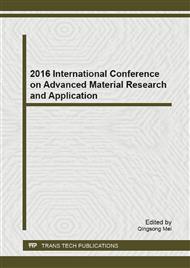p.79
p.85
p.93
p.101
p.107
p.113
p.123
p.128
p.134
Dynamic Impact Induced Residential Stress and Deformation in Silicon Carbide Ceramics
Abstract:
Silicon carbide ceramics with different grain sizes were tested at high strain rate using a small-scale gas gun with sharpened tungsten carbide projectiles impacting at a sub-ballistic velocity of 100 m/s. The resistance of ceramics to fracture was recorded by visual examination of the cracking on the impacted surface and the damage in the sub-surface region. The crack pattern and impact crater region size observed in silicon carbide specimens are generally due to their mechanical properties. Silicon carbide samples had good capacity to defeat the projectiles but the low toughness led to early failure. Raman SiC mapping was used to examine the residual stress and plastic deformation induced in each material. The silicon carbide samples showed different dynamic behaviours due to the extent of stress relaxation.
Info:
Periodical:
Pages:
107-112
Citation:
Online since:
January 2017
Authors:
Price:
Сopyright:
© 2017 Trans Tech Publications Ltd. All Rights Reserved
Share:
Citation:


